Foam Rolling for Runners: Why and When to Do It
- January 25, 2022
- Last Updated: December 13, 2023
- 0 Comments
- Running
Foam rolling for runners is definitely an underemphasized activity, but one that can lead to a plethora of benefits. Learn the best way to foam roll after running with the videos below.
As an Amazon Associate, I may earn from qualifying purchases. You can read more here on our Disclaimer and Privacy Page.
Most runners approach foam rolling in similar ways: we know that it, in theory, it would benefit our performance, and deep down, we intend to make it a habit.
Unfortunately, most of us don’t take the step to turn the intention into a habit.
While the term is thrown around frequently, foam rolling is rarely explained well. The technique is one form of self-myofascial release, also known as SMR.
SMR is essentially self-massage, and it can also be performed using a medicine ball, handheld rollers, or a lacrosse ball to work out knots in the muscle. Basically, a leg roller for runners.
In This Article
Foam Rolling for Runners 101
Foam rolling is helpful for running because it releases muscle tension, improves flexibility, and boosts movement efficiency all through a single process.
While it’s definitely helpful while training, it’s also a great practice for off season running.
Of course, it’s also essential for post half marathon recovery and your marathon recovery plan.
When a muscle is overused, the muscle tissue experiences trauma, which creates inflammation and eventually alters neuromuscular control, resulting in a muscle imbalance.
Muscle imbalances can look like different things, depending on the nature of the tissue trauma.
Often times, the dominant side of the body will become stronger than the other, or the anterior chain will become stronger than the posterior chain.
Pre run foam rolling or post run foam rolling can be beneficial! Because of this, a quality foam roller is always on my list for gifts for running moms and running stocking stuffers.
If you can find a mini foam roller or even a running stick, both make for great stocking stuffers for runners!
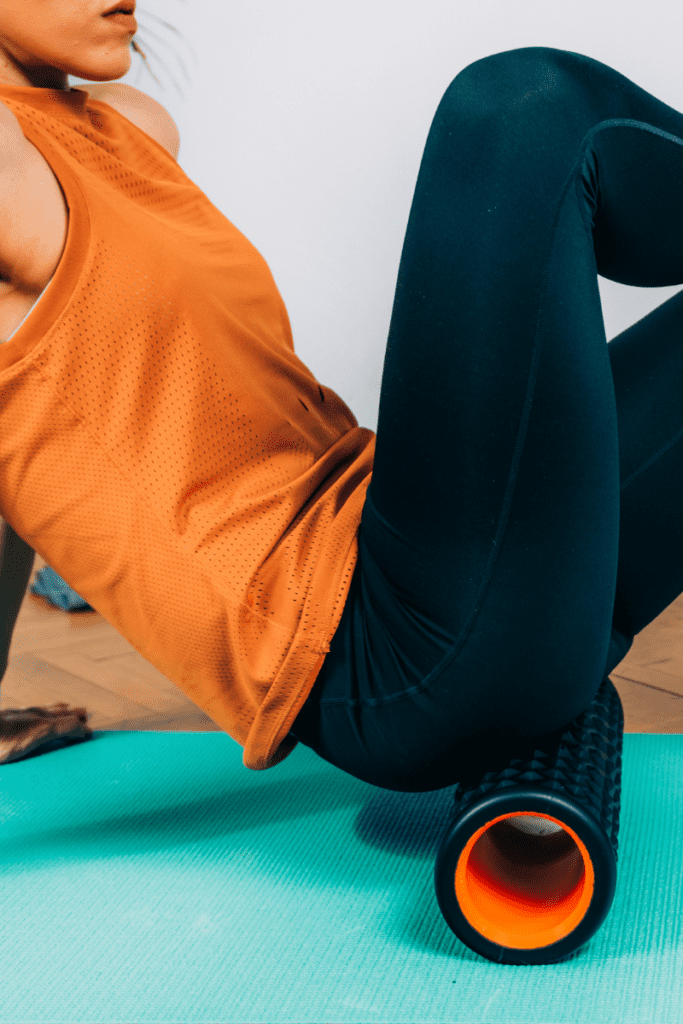
What Does Foam Rolling Do?
Foam rolling reverses muscle imbalances by alleviating muscle adhesions, which restores elasticity and function to soft tissue. The process both inhibits overactive muscles and prepares underactive muscles to be strengthened.
Due to the repetitive nature of running, most runners develop more muscle adhesions than the general population.
The best way to avoid further muscle imbalance is to strengthen healthy muscles, like with this upper body workout for runners paired with lower body work as well.
But, in order to take this step, we first have to work the adhesions out of the muscles.
I always recommend foam rolling in any marathon recovery plan or half marathon recovery, or just for those who exercise often and intensely.
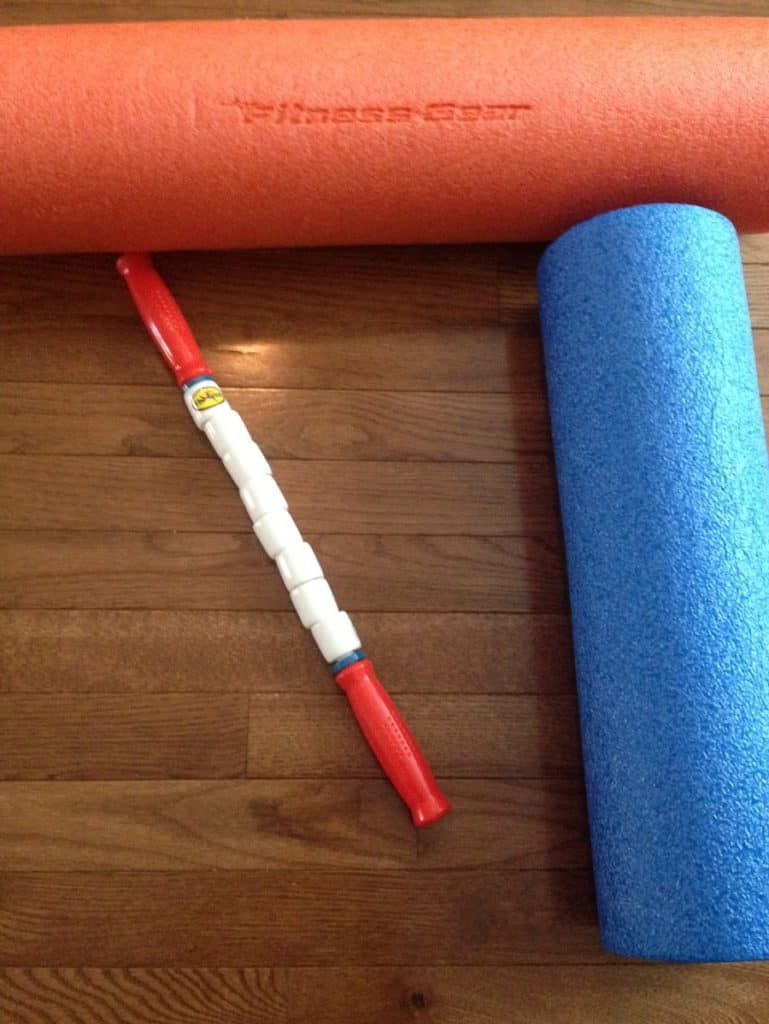
Muscle Roller Stick Benefits
Why runners may not enjoy foam rolling, muscle rollers for runners should be a staple piece of equipment!
A great perk is that you can use foam rollers on your back, neck, arms, legs, etc., so you don’t need any other equipment besides the roller itself!
Some more benefits of foam rolling for runners include:
- Helping to reduce muscle soreness and tightness
- Increasing blood flow to the muscles, which can lead to less inflammation and faster recovery time
- Improving mobility by increasing joint range of motion
- A great way to warm up before your workout or for post-workout stretching
Foam rollers and muscle roller sticks are relatively inexpensive for how long they will last. T
hey are also very easy to store, taking up very little space.
I felt very tight during both of my pregnancies, so I also did a lot of foam rolling in pregnancy.
How to Foam Roll
Foam rolling should be performed during warm-up and cool-down and can be executed on just about any major muscle group. Still, overactive muscles benefit the most from foam rolling.
The most common misconception about foam rolling is that the foam roller should constantly move back and forth over the adhesion.
However, the most beneficial technique is to use the roller to put pressure on the adhesion for at least 30 seconds.
Muscles have receptors known as Golgi tendon organs (GTOs, for short) that cause the muscle to tense up when stretched as a defense mechanism against excessive elasticity.
Holding pressure on the spot for more than 30 seconds signals the GTOs to relax, allowing the pressure to resolve the adhesion without reluctance from the muscle.
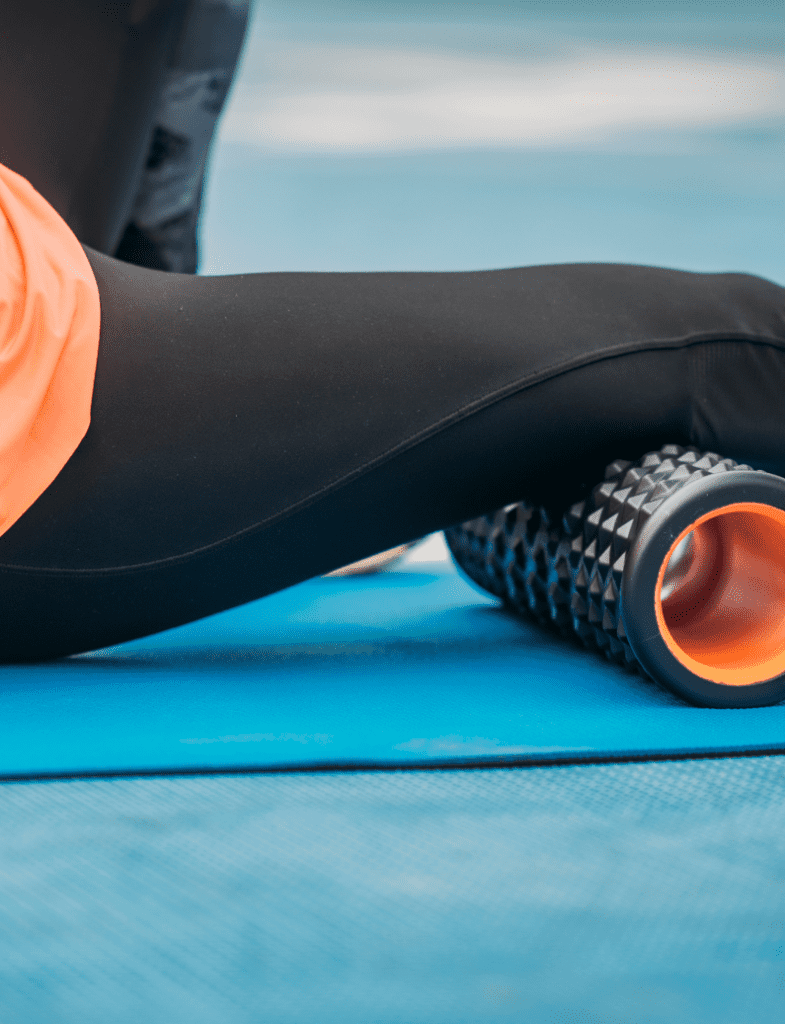
Best Foam Roller Exercises for Runners and Specific Muscles
Here are some of the best foam rolling exercises for runners. It can be helpful to start to implement these when foam rolling after running into your foam rolling routine.
If you’re short on time (like trying to fit in marathon training with kids), don’t feel like you have to work each of these daily. Do 1-2 muscle groups a day.
Calves
The repetitive alternation between plantar flexion and dorsiflexion in running causes the calf muscles, technically known as the gastrocnemius and soleus, to tighten excessively.
Tightness in the calves can result in various severities of imbalances and compensations, including pronation distortion syndrome, flat feet, turned out feet, and lower crossed syndrome.
Foam rolling the calves reinforces healthy muscle length, which allows the ankle to plantar flex and dorsiflex through an unhindered full range of motion.
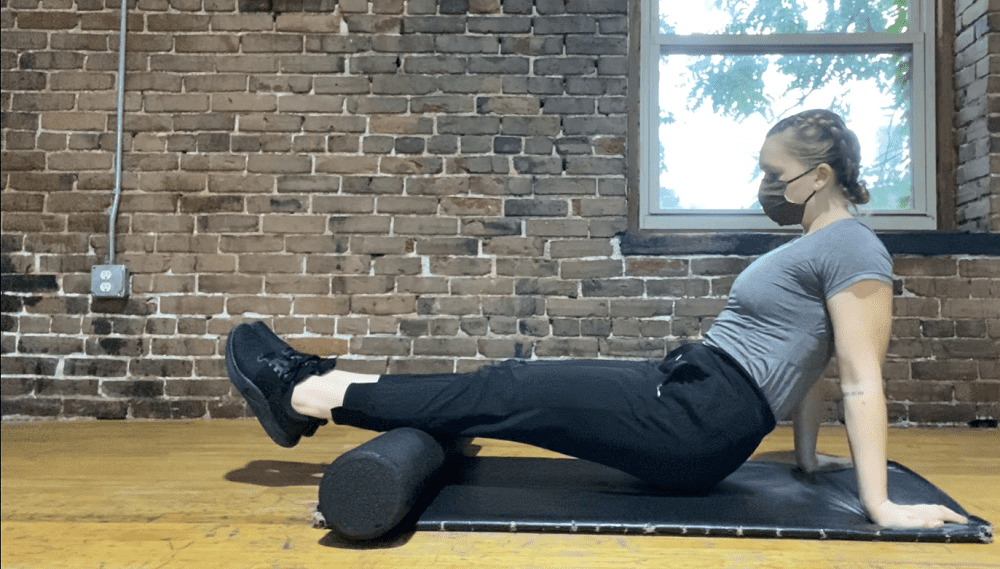
To perform the movement: Sit on the floor with legs extended out to the front. Place the foam roller below the calves, and with hands behind the torso, barely lift the hips off of the floor, and lean back into the arms enough to grant mobility to the roller.
Roll up and down the calves, and when the roller contacts a trigger point, hold for at least 30 seconds, until the point finds relief.
If one calf is significantly tighter than the other, keep the tighter calf on the roller, and bend the other knee to plant the foot.
Use the body to stabilize the body while repeating the rolling process on the singular, tighter calf.
Quads
Most people, especially runners, are anterior dominant, meaning the front side of the body is overactive. The quads fall into this category.
Plus, if an individual has weak glutes, they likely have even tighter quads. If the quads are not stretched, the tightness will cause the knees to move inward, leading to muscle imbalances in compensations.
In running, glute engagement brings power to the gait by adding force to the plantar flexion step of the movement.
Therefore, foam rolling the quads reinforces lower body muscle balance and allows glute strengthening to occur, which ultimately benefits running performance.
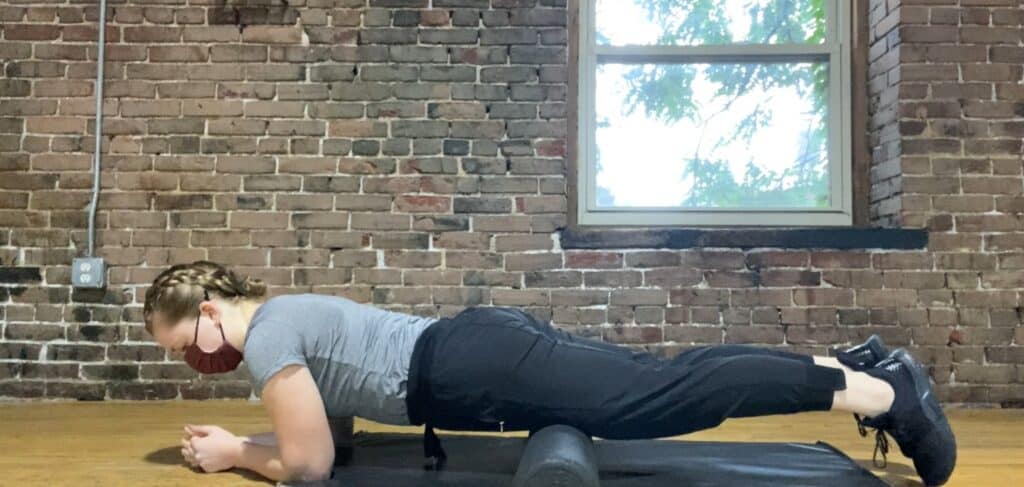
To perform the movement: Lay face-down on the floor, and bending the left knee comfortably out to the side, place the foam roller under the right thigh, just below the hip.
Propping the body up on the forearms, roll up and down the right quad until the roller crosses a trigger point.
Hold for at least 30 seconds, until the point find relief, then continue throughout the right quad.
Once knots in right quad are released, repeat on the left quad.
Hamstrings
Foam rolling hamstrings is so important!
Did you know that, even though the hamstrings often feel tight, they might actually be overstretched?
That’s right—when the front side of the body is too tight, the hamstrings are stretched past their ideal length.
However, foam rolling the hamstrings restores balance to joint dynamics and primes the muscles to be strengthened, so taking a roller to the hamstrings is still beneficial.
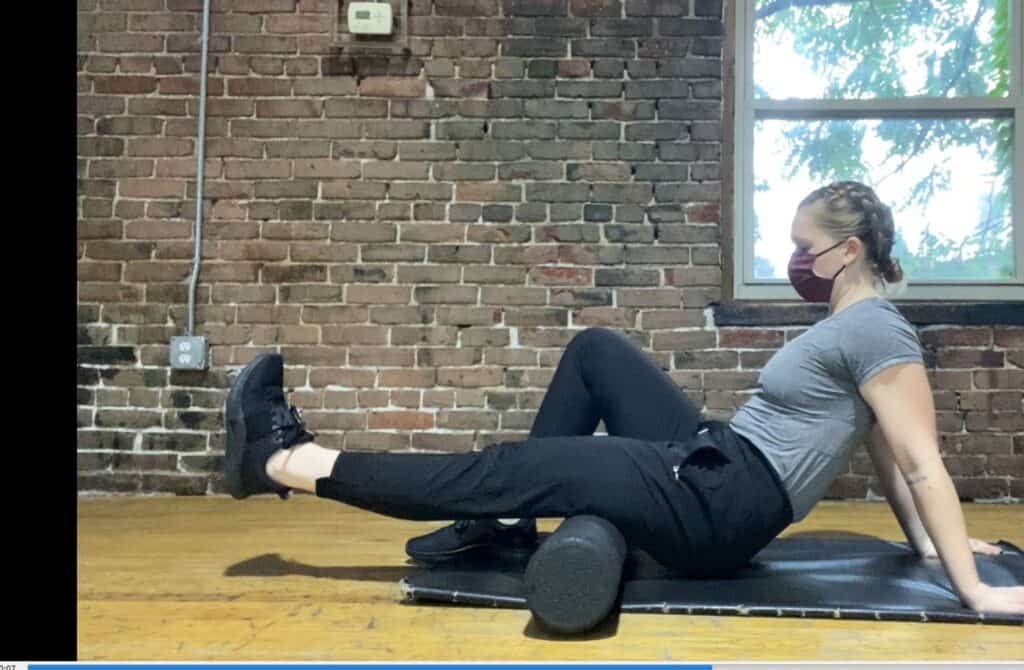
To perform the movement: Sit on the floor with the legs extended out to the front. Place the foam roller below the right thigh and the hands behind the torso, leaning back on the hands to support the body.
Bend the left leg at a comfortable angle, and plant the left foot, so that the roller remains under the left leg.
Keeping the right leg straight, roll up and down the right hamstring, and when the roller crosses a trigger point, hold for at least 30 seconds, until the point finds relief. Once knots in the right hamstring are released, repeat on the left hamstring.
This foam roller hamstring stretch will leave you feeling much better.
Hip Flexors
The hip flexors are synergists in running, meaning they’re more involved in maintaining form than providing power to the movement.
In fact, the hip flexors are responsible for bending and lifting the leg at the hip, which is the source of the running movement.
Repetitive bending causes the hip flexors to become tight, if not cared for properly.
Especially if one leg is stronger than the other, lack of proper care can cause muscle imbalance or reinforce preexisting muscle imbalances.
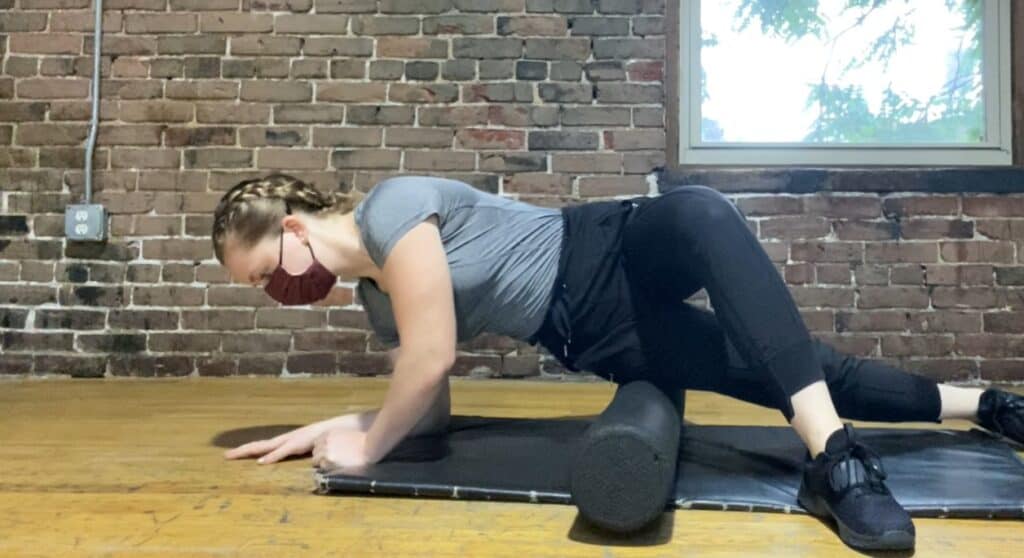
To perform the movement: Lay face-down on the floor, then roll towards the side of the body, placing the foam roller under the right leg with pressure on the hip flexor.
Support the body with the arms in a forearm plank position and left leg bent to the side, knee resting on the floor.
Roll up and down the side of the hip flexor until the roller crosses a trigger point. Hold for at least 30 seconds, until the point finds relief.
Once pressure is relieved, continue shifting weight to find more knots in the right hip flexor. Repeat the entire process on the left side.
Low Back
Muscle tightness or imbalances in the lower body can result in tightness or imbalances in the lower back.
Further, when runners put effort into strengthening the posterior chain, improper form can further lower back tension.
On top of this, runners need core strength in order to maintain proper form, and the low back is one of the more neglected areas of the core.
But in order to strengthen the low back, the muscles must first be mobile.
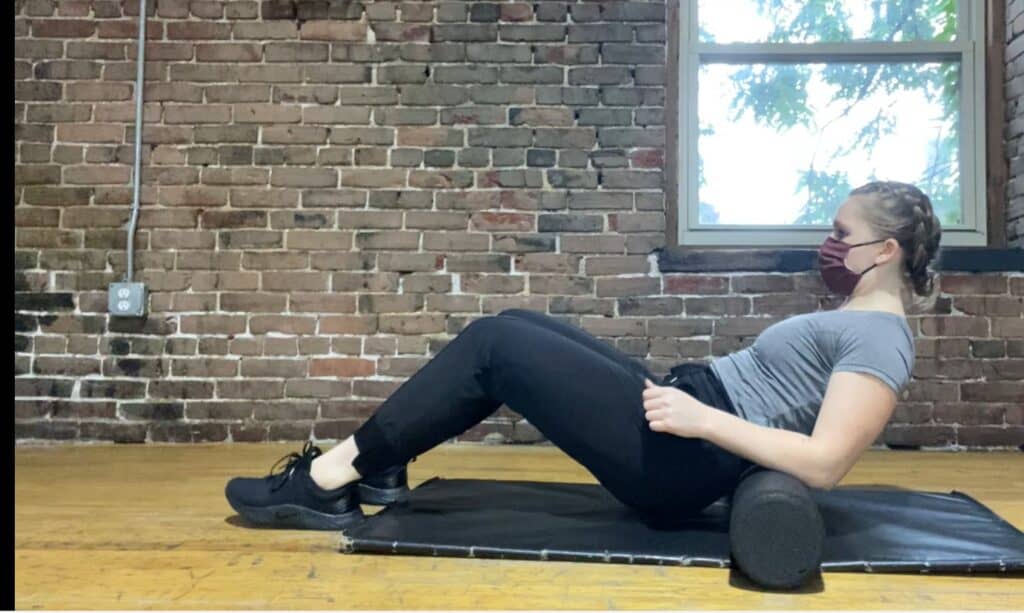
To perform the movement: Position the low back on top of the roller with knees bent at a comfortable (90- to 100-degree) angle and feet planted on the floor.
Support the body either with elbows resting on the roller or palms planted behind the roller.
Allow the roller to absorb the weight of the body, and shift the low back across the roller until a tender spot is unearthed, then hold for at least 30 seconds.
Once pressure is relieved, continue shifting weight to find more knots in the lower back, and repeat the process.
FAQ
Runner’s knee has various potential causes—including but not limited to a displaced kneecap, weak thigh muscles, weak or tight hamstrings, tight Achilles’ tendons, and poor foot support. Considering runners knee could be attributed to various root causes, foam rolling is not a guaranteed fix for runners knee.
However, foam rolling does address multiple causes, especially muscle weakness and tightness. Additionally, foam rolling will not worsen the runner’s knee, so foam rolling for the runner’s knee is recommended.
Nope! Foam roller preference is completely up to the user. The best foam roller for a runner is what a runner will use! Most widely used foam rollers are simply foam cylinders.
For those wanting a more intense experience, some foam rollers have ridges or notches built in to dig even deeper into knots, but these features are unnecessary.
Either, or both! Foam rolling primes the muscles to work, and it also helps to work out knots in the muscle after exercise concludes. If you have the time, it’s most beneficial to foam roll for 10 minutes before exercise and also foam roll after running for 5-10 minutes. If you don’t have time for both, experiment to figure out which works best for your body.
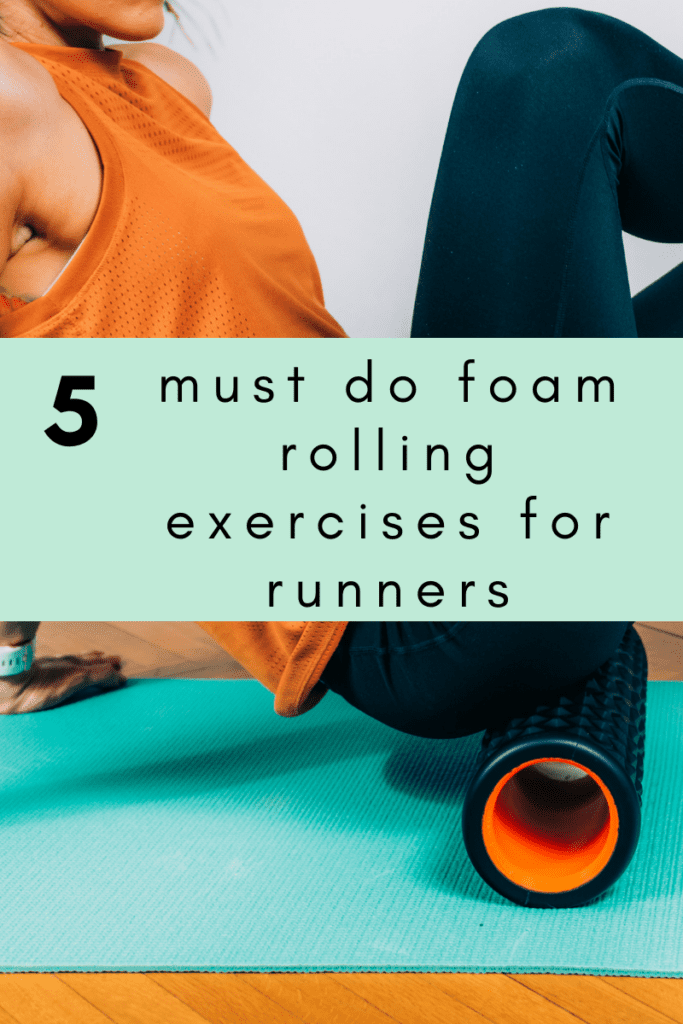
How often do you foam roll?
Support Bucket List Tummy

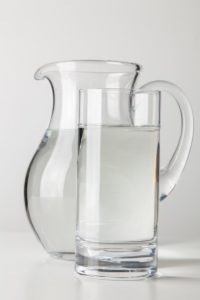
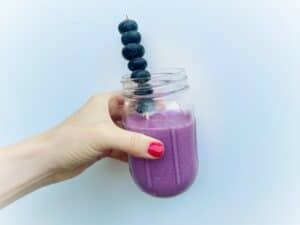

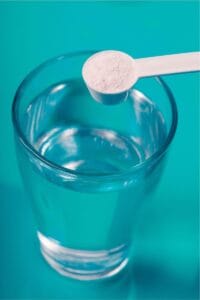

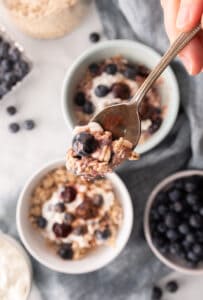


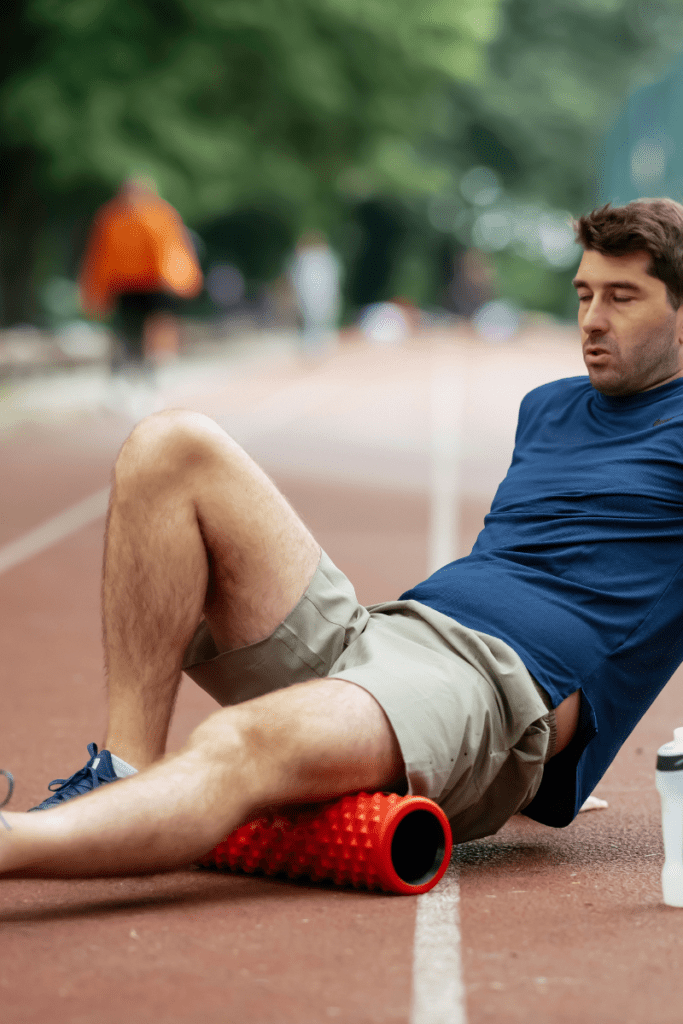


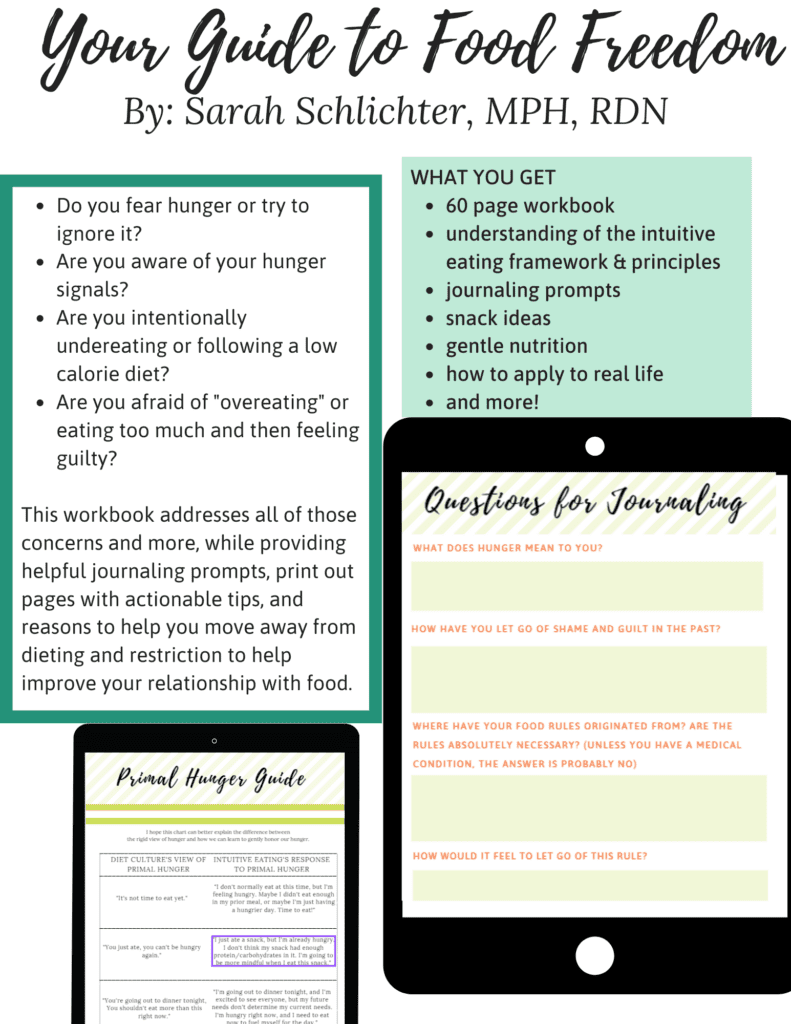





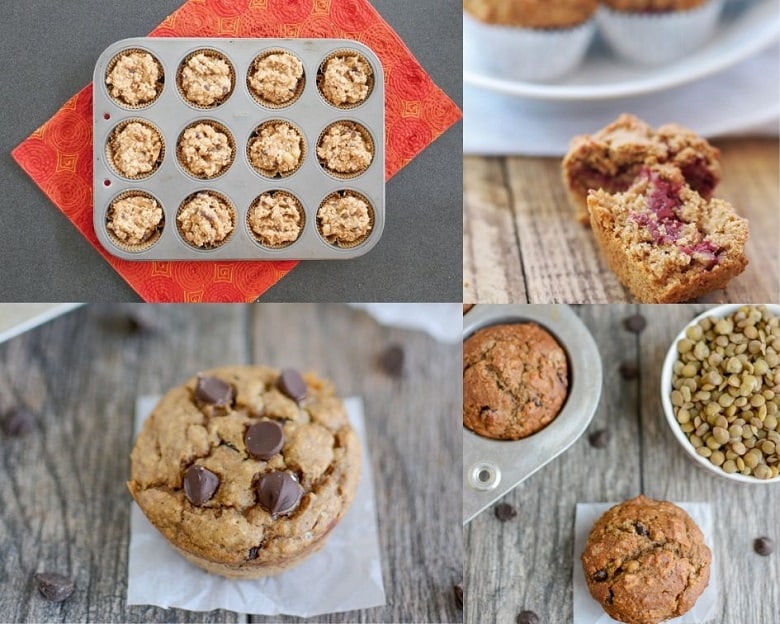

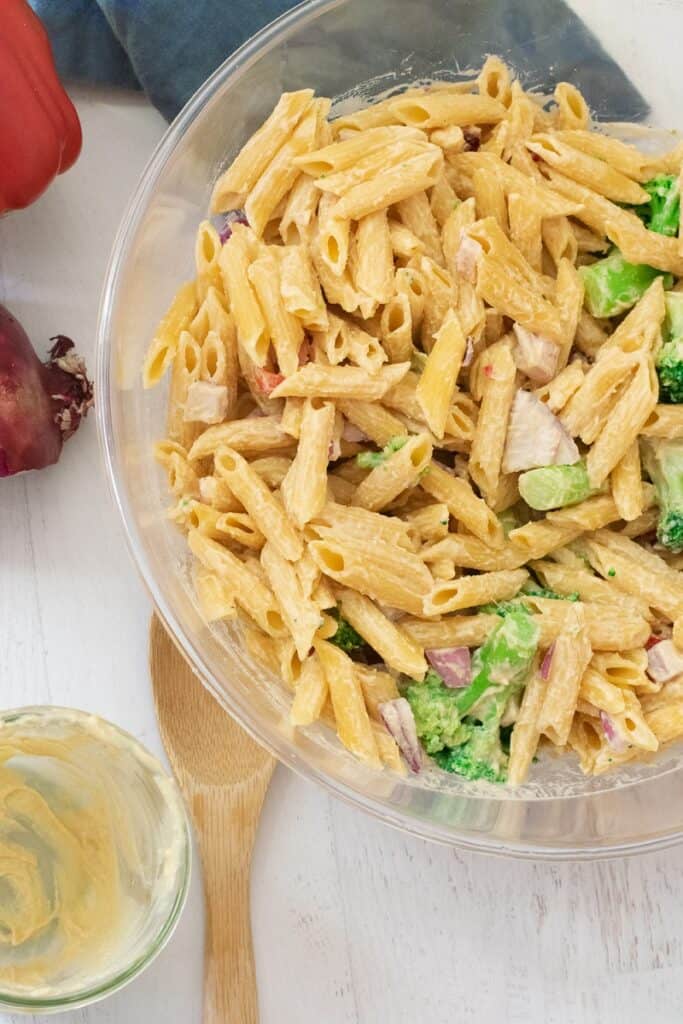

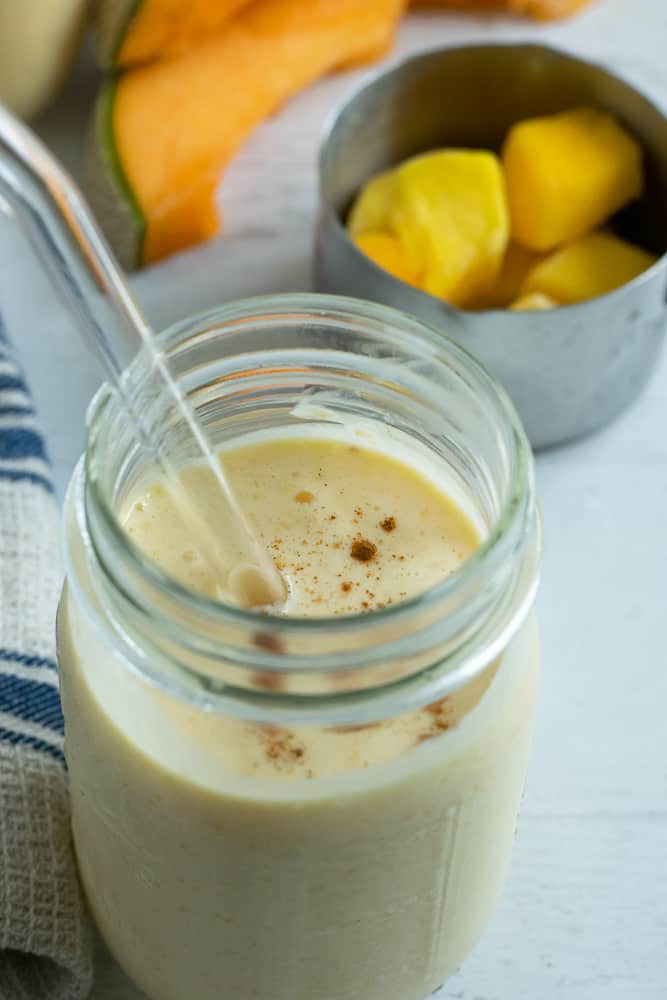


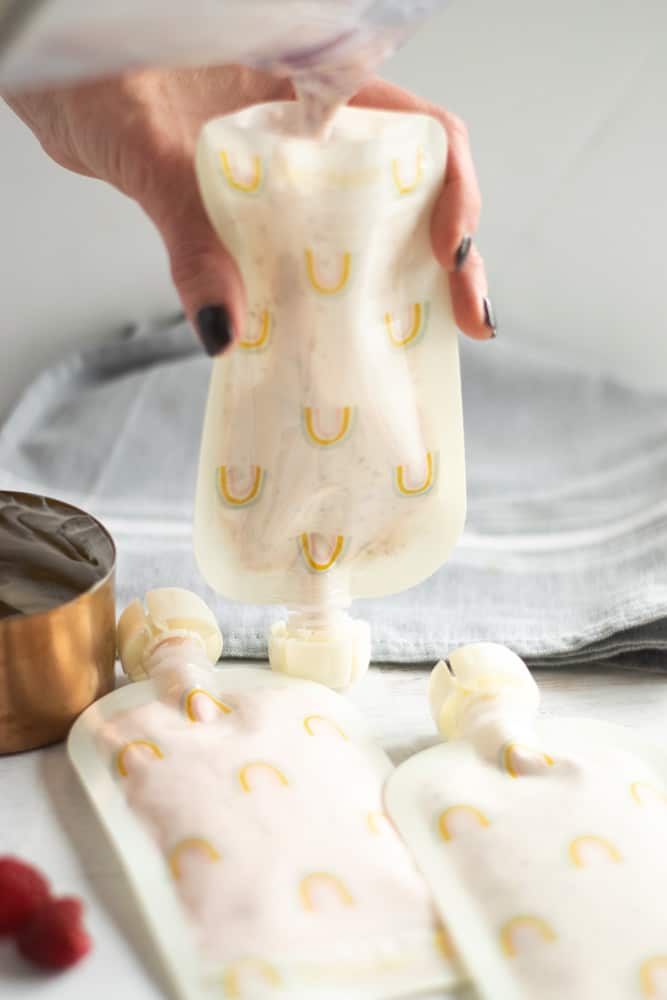


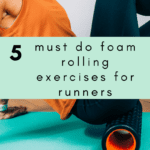
Like This Content?
Support Bucket List Tummy